EGYPT: Women in Graffiti: A Tribute to the Women of Egypt
Pharaonic women in battle by Alaa Awad
It’s a battle, being a woman in an Arab country, but perhaps the dire conditions makes us fighters. Since January 25, so many foreign reporters have waxed on about the awakening of Arab women in the Arab Spring; and how the revolutions liberated us/made us wake up and smell the coffee/made us throw off our headscarves and run happily through the meadows.
This, in my opinion, is crap. When you look at the videos and photos of the eighteen days of Tahrir, you’ll see Egyptian women side by side with men in the thick of battles, some even at the front lines, braving tear gas and live bullets. We participated as Egyptians first, not as women, in January 25. And it’s incredibly patronizing to assume we ‘became’ liberated; 1. as if it was a revolution led by men that awakened and inspired us women 2. as if women were living in caves and making mud paintings before the revolution.
the Arab women I’ve met are some of the fiercest women in the world with sincere dedication to their work, cause and sense of identity. We didn’t experience an ‘awakening’ since the revolution; but we’ve definitely had to fight harder.
The last two years’ stories of horrific sexual and physical violence against women in Tahrir and many other depressing news could very easily break your will, change your mind about a woman’s place in protests and in Egypt as a citizen with equal rights. But then I think of these remarkable women and I am reminded of their strength, creativity and perseverance.
There are many powerful, brilliant Arab women, including several in the graffiti scene. Graffiti is a dangerous cause as it is, and with perpetual violence against women in Egypt, you’d think female graffiti artists would be too intimidated to work on the city streets. But they’re not; they’re young, tough, talented and just as worthy of recognition as their male counterparts.
Alexandria street art by Aya Tarek
Alexandrian painter and street artist Aya Tarek is considered by many of her peers to be one of the pioneers of graffiti in Egypt. She holds her ground against her male contemporaries, and has exhibited recently in Germany as well as Beirut. Aya appeared in Microphone, Ahmed Abdalla’s brilliant 2010 film about the underground art scene in Alexandria. She is the first graffiti artist in Egypt to appear in a feature film not only playing herself but also correctly representing the graffiti scene in Egypt.
Don’t touch, or castration awaits you. By Hend Kheera
Hend Kheera is the first Egyptian graffiti artist to be profiled by Rolling Stone. Her work has a tough, extreme and honest quality to it, and there’s nothing stereotypically feminine about her aesthetics. Hend made stencils in Mogamaa and around Tahrir during sit-ins in 2011. She participated in an anti-sexual harassment campaign by spraying the stencil ‘Warning! Don’t touch or castration awaits you!’. The stencil was shocking and provocative, compelling some bystanders to even berate Hend for making it, a surefire sign that her message was powerful and effective.
The brilliant mixed art mural by Hanaa El Degham on the wall of the Lycee school
Hanaa El Degham’s mixed art mural on the Lycee wall is to this date one of the most astounding street artworks I have seen in Egypt. She worked several layers over many days, combining barely finished paintings with stencils and newspaper collages. If you looked closely at the newspaper clippings, you’d find them completely spot-on and appropriate for the beautiful social commentary she was making by portraying the poorest of Egyptians carrying gas cylinders on their heads. A women fully clad in black niqab carries a gas cylinder with ‘Change’ sprayed on it. That visual in itself has so much to say.
Hanaa also worked for days with Ammar Abo Bakr and other painters on the Mohamed Mahmoud martyrs’ mural, adding frames and lotus flowers to several of the martyrs’ portraits.
Bahia Shehab’s No stencils, on same wall as Ganzeer’s tank
I’d seen Bahia Shehab’s stencils around Zamalek and Tahrir for months, but it was only until I watched her inspiring Tedx talk on YouTube when I made the connection. Bahia spoke beautifully and powerfully of fighting for social and political justice through art. Her stencil below is one of my favourite pieces, a stencil I spotted on the bleak concrete wall of Mansour Street. When you see such an inspiring and pretty quote on a grotesque concrete military construction, you regain hope; at least in the power and potential of art.
Pablo Neruda’s ‘You can step on the flowers but you can never delay the Spring’ by Bahia Shehab
No to sexual harassment, by Mira Shihadeh
There’s also Laila Magued, who works tirelessly day and night alongside Mohamed El Moshir and Ammar Abo Bakr in completing murals like this fantastic one on Sheikh Rihan Street, and there’s Mira Shihadeh who paints messages against sexual harassment, and draws crying faces on the streets of Cairo, with the simple message ‘Why’. I’m sure there are many other women to follow suit soon.
I am privileged to have met most of these women and watch them work. It takes a certain fierceness to persevere in creating unique, inspiring street art under the volatile and unpredictable conditions of the Egyptian streets.
Graffiti has also paid tribute to the women of Egypt, whether by honoring them like Alaa Awad’s pharaonic mural or by paying tribute to their bravery in battle like Zeft’s poster, or defending their rights to equality.
Don’t label me, by Nooneswa
Nooneswa (Noon El Neswa) is a collective of activists that uses graffiti to raise awareness about women’s rights and to lobby for gender equality. Noon El Neswa organised street campaigns where stencils featured Laila Mourad, Soaad Hosny and other iconic women of the Egyptian cinema, and slogans included film quotes or simple demands for equality. Nooneswa is the first collective of its kind to focus solely on women’s issues and use graffiti to raise awareness on the streets of Cairo. Their ‘Don’t Label Me’ design has since appeared in Tunisia, replicated by feminist activists there.
A Girl is just like a Boy, stencil by Nooneswa
graffiti made in support of the digital platform ‘The Uprising of women in the Arab World’
This graffiti on Mohamed Mahmoud Street paid tribute to the Uprising of Women in the Arab World, an online platform with over 80k followers that promotes Arab women’s rights using provocative and personal messages/photos of women.
During battles, I will be behind you, protecting you
This stencil on the wall of AUC’s Greek Campus is my favourite: instead of man protecting woman, this visual has the woman rescuing and protecting the man in battle. A brilliant testimony to the fierceness and loyalty of women in protest.
The stencils below are all tributes to the fighting spirit of Egypt’s women by Keizer, Zeft and Amr Nazeer, X4SprayCans and Ammar Abo Bakr, who paid tribute to Samira Ibrahim with a text that compared her to Aliaa El Mahdy. Abo Bakr described Samira Ibrahim as the true hero:
‘Samira Ibrahim: 25 years old. She was stripped and forcefully given a virginity testing in front of military officers and soldiers. She vowed not to stay silent and pursued legal action against them. no attention, no public interest, no media coverage, no one cares.
Aliaa El Mahdy. 20 years old. Stripped and revealed her whole body of her own free will, media and public went crazy, her nude photo was viewed almost 3 million times and no less than 50 articles and several tv shows about her.
A salute of respect to Samira Ibrahim, daughter of Upper Egypt.’
Fear Me, Government! Stencil by Keizer
Nefertiti with a tear gas mask, poster by Zeft. Photo courtesy of Zeft.
Ammar Abo Bakr’s touching tribute to Samia Ibrahim versus Alia El Mahdy
Get Angry, poster art by 4SprayCans
Sit El Banat, stencil tribute to the women who were beaten, dragged and stamped on by military forces in December 2011
Source: suzeeinthecity
Follow us on: http://www.facebook.com/TahrirIcn
Posted on January 11, 2013, in North Africa and tagged Egypt, Egyptian Revolution, Feminism, Graffiti, Sexual Harassment, Women's Rights. Bookmark the permalink. 1 Comment.

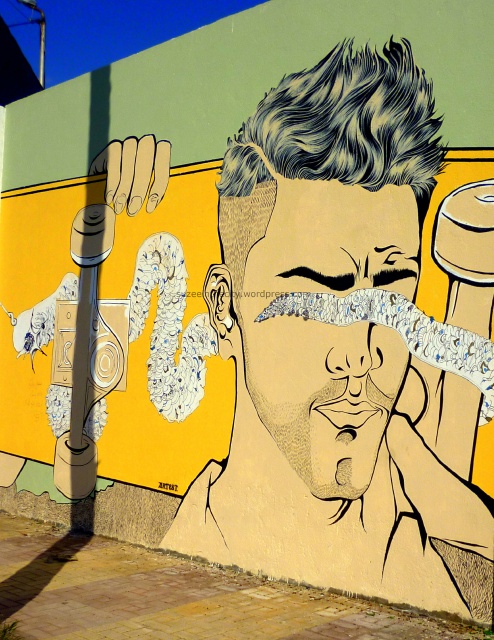
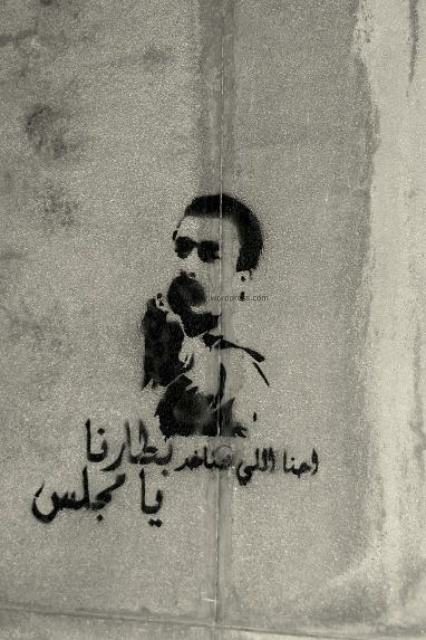

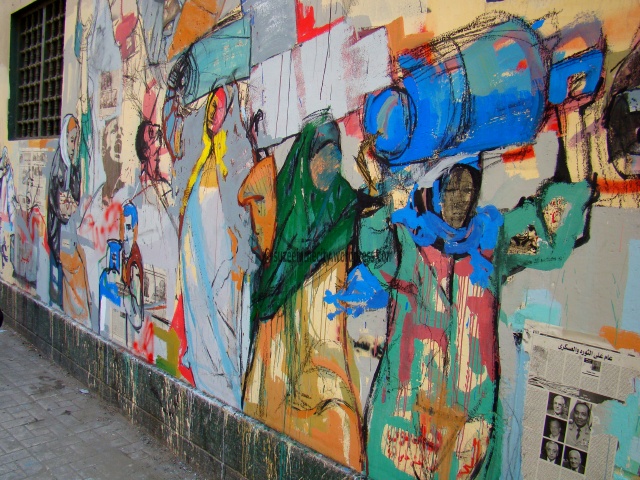
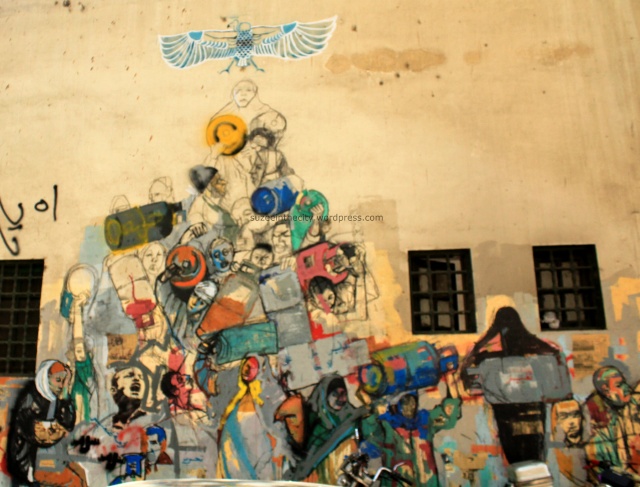

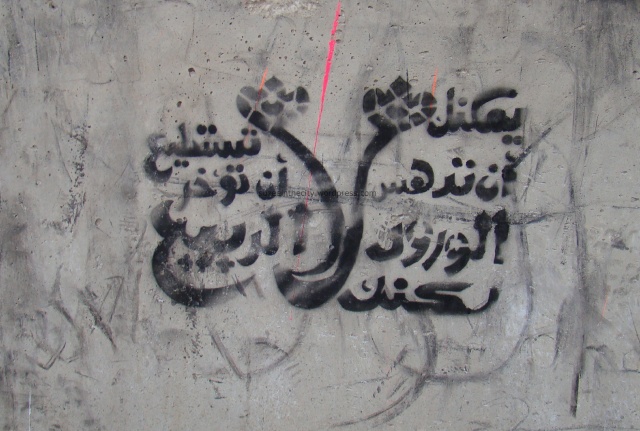

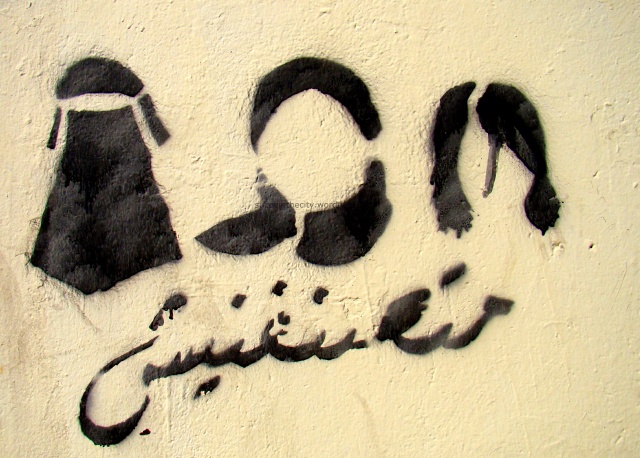
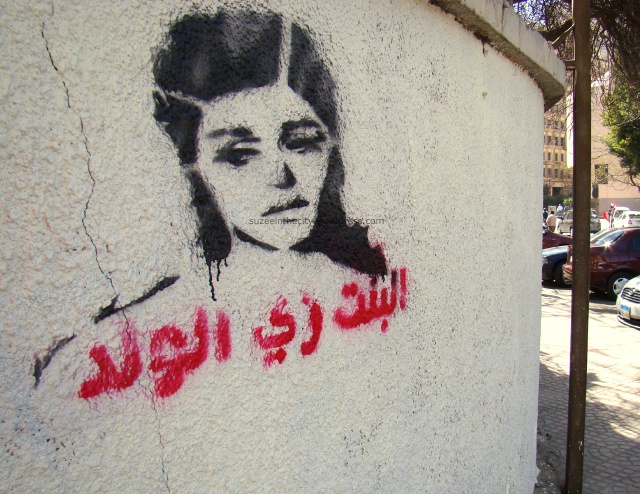
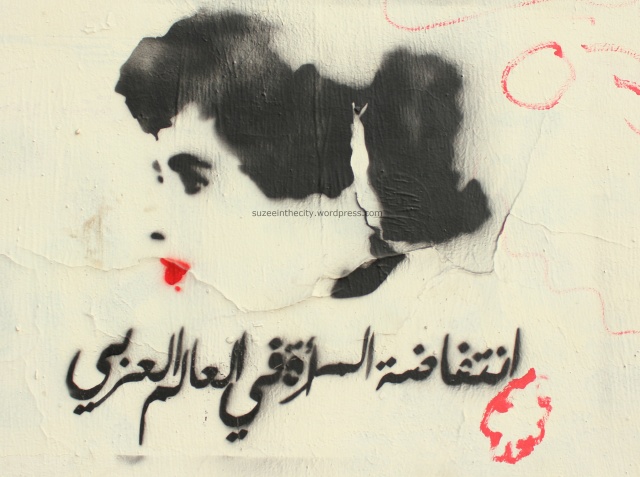
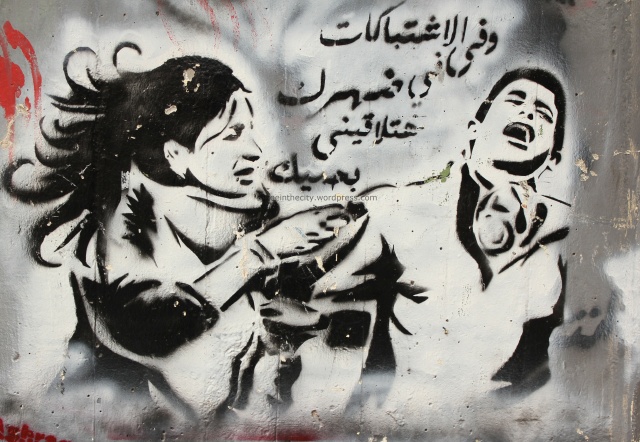
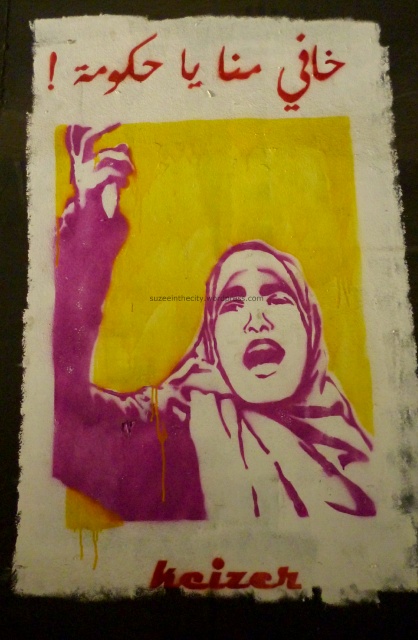


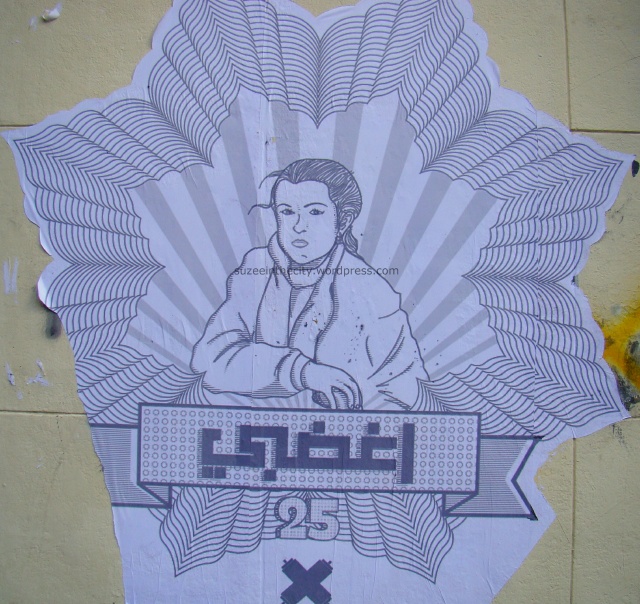
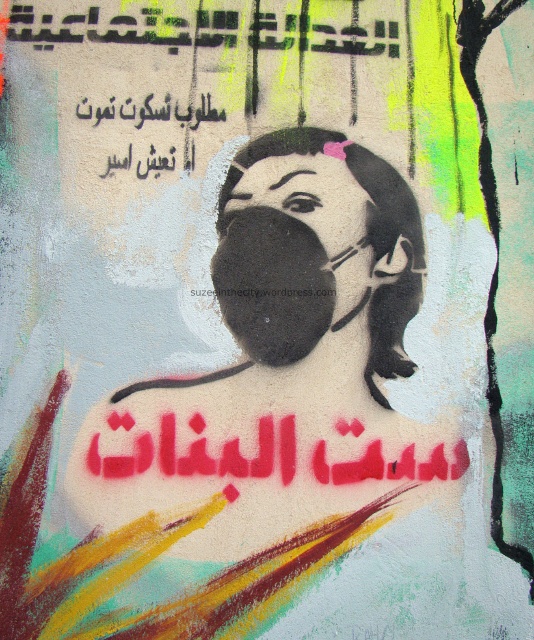
Pingback: Dehya.